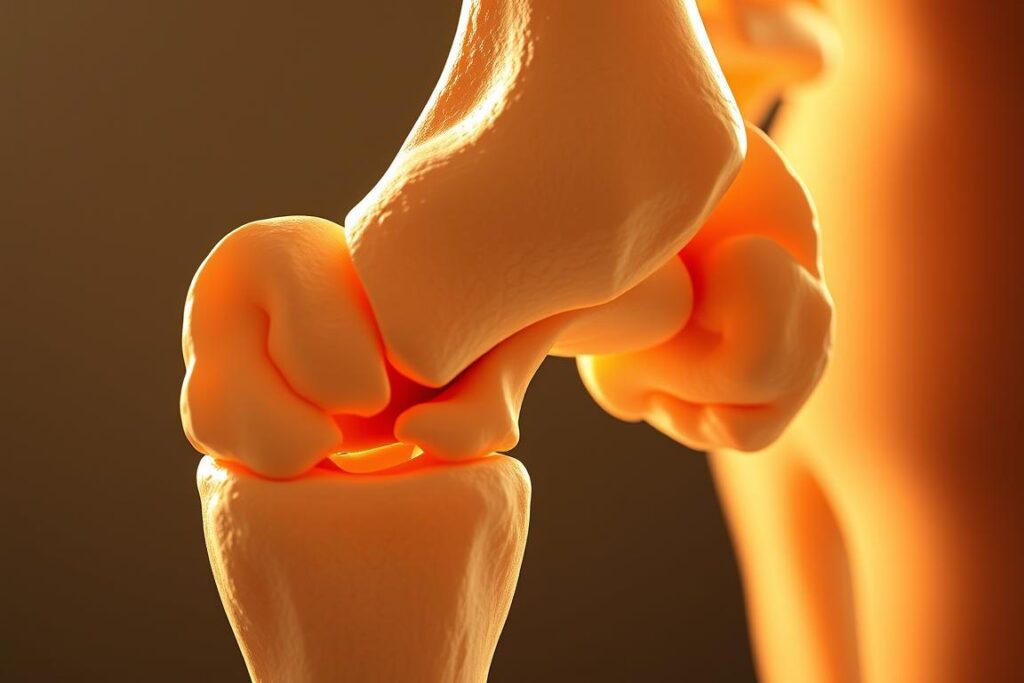
Does Lifting Make Women Bulky? The Science Explained
Does lifting make women bulky? That question stops a lot of people from starting strength work, but the short truth is simple: visible size takes years, specific calories, and relentless training time — not a few gym sessions.
You’re not going to wake up transformed. Most changes show as firmer shape, better posture, and more endurance before any big mass gain. Women have a different hormone profile than men, so muscle growth is slower and more subtle.
Strength training shifts your body composition and boosts health. With smart programming, sensible nutrition, and steady recovery, you can build usable strength, protect joints, and improve confidence — without chasing a look you don’t want.
Key Takeaways
- Significant size takes consistent training, calories, and years — not weeks.
- Hormones mean most people see shape and firmness first, not bulk.
- Strength work improves health, bone density, and daily function.
- Simple programs and clear nutrition guardrails give reliable results.
- We’ll separate myth from physiology so you train with confidence.
What most women really mean by “bulky” — and what they actually want
The word “bulky” often hides a simple wish: to look tighter and more confident in clothes. You want firmness and shape, not oversized mass.
“Lean muscle” and “toned” bodies: clearing up marketing myths
Marketing coins phrases like “lean muscle” and “tone” to sell classes and supplements. In reality, all muscle is lean tissue. “Toned” simply means visible muscle with lower fat and better posture.
If your goal is to build muscle in a way that improves silhouette, aim to add modest muscle while managing fat with steady training and nutrition.
Body composition vs. body weight: why your look changes before the scale does
Weight can stall while your body recomposes: you lose fat and gain muscle. That swaps fat for denser tissue, so clothes fit better even if the number on the scale barely moves.
- When you say “bulky,” you probably mean you want a firm, athletic look.
- Body composition beats body weight: inches and fit shift first.
- Best route: consistent training and consistent nutrition, not random high-rep fads.
| Goal | What it is | How to reach it |
|---|---|---|
| Firm, athletic shape | More muscle, less fat | Strength training + proper protein |
| Maintain weight | Stable scale, better fit | Small calorie tweaks, consistent training |
| Increase mass selectively | Targeted muscle growth | Progressive overload and surplus calories |
Set clear goals: gain the right muscle for your silhouette—glutes, back, shoulders—while keeping fat controlled. That way you build muscle where it matters, without chasing extreme size.
Does lifting make women bulky? The evidence, not the hype
Most gym visits improve strength long before they add large mass. You’ll feel stronger, stand taller, and notice better movement before any dramatic size change appears.
Building muscle is slow. Real, measurable gains take focused training, a calorie surplus, and consistent protein over months and often years. Casual programs rarely provide the sustained stimulus needed for big changes.
Why significant size takes years of smart, consistent work
Adding notable muscles requires progressive overload, recovery, and enough food. Even motivated people see small changes each month. Those small wins add up—but they need time.
Why pro bodybuilder physiques aren’t a byproduct of casual strength training
Pro bodybuilders spend years on strict programs and diets. Many also use performance aids to reach extreme size. That combination is far beyond typical gym routines for most people.
- Real talk: a lot of time and effort is needed for major mass gains.
- Most lifters notice strength and posture shifts first; circumference changes follow.
- You can control your direction—slow progress means you can adjust calories or training if you don’t want more size.
| What you want | Typical timeline | Key inputs |
|---|---|---|
| Strength and shape | Weeks to months | Consistent training, adequate protein |
| Noticeable muscle | Months to a year | Progressive overload, mild surplus |
| Large, competitive mass | Years | Targeted work, big surplus, often pharmacology |
Bottom line: training builds the body you want when you control effort, food, and rest. The slow pace protects your options and keeps results predictable.
The physiology: hormones, muscle tissue, and why women don’t suddenly “get big”
Your hormones and cells set the tempo; they rarely sprint to huge change overnight. Hormone levels shape how fast muscle grows, and women generally have lower testosterone than men. That limits the rate and size of hypertrophy, so gains arrive slowly.
Testosterone, estrogen, and growth signals
Testosterone helps drive mass and fiber growth. Women’s baseline levels stay much lower than men’s, so the same program produces smaller, slower increases in muscle.
Estrogen and progesterone support joint health and recovery. They help you train hard and stay resilient without producing rapid bulk.
Acute vs. chronic hormone responses
Heavy resistance sessions can cause brief hormone spikes. Studies show men often get larger testosterone bumps; women’s rises are usually smaller or not significant.
Those acute signals matter, but they don’t equal long-term mass. Muscle tissue grows when you apply progressive tension, eat enough, and recover for months.
Genetics and realistic expectations
Genetics change the pace. Some people add muscle faster; most progress stays gradual. Strength gains often outpace visible size at first because your nervous system learns to recruit muscle better.
- Hormones influence outcomes; lower testosterone in women slows hypertrophy.
- Brief hormonal spikes after training are signals, not guarantees of mass.
- Consistent tension, calories, and rest create lasting tissue growth.
| Factor | Typical effect | Practical takeaway |
|---|---|---|
| Baseline testosterone | Limits max rate of muscle gain | Expect gradual size changes; focus on strength |
| Acute hormone spikes | Short-lived signaling | Prioritize consistent training, not single sessions |
| Genetics & recovery | Individual variability in pace | Adjust calories and volume to taste your progress |
Nutrition drives muscle gain: surplus calories and protein make the difference
Food is the engine that decides whether training adds shape or just maintains your current form. You can get stronger while eating too little, but to truly build muscle you need energy to spare. In plain terms: you can’t grow new tissue in a calorie deficit.

Calorie balance 101
Calories control direction. Eat below maintenance and your body conserves; eat at maintenance and you maintain tissue; add a small surplus and you give your body permission to build mass.
Protein targets that support strength without chasing mass
Protein is the building block. Aim for a steady amount each meal rather than one big protein hit. For most people, 0.7–1.0 grams per pound of body weight supports recovery and performance without forcing big fat gain.
- Muscle is expensive: you won’t build it without enough calories and protein.
- In a deficit you can still gain strength, but new tissue is limited.
- Many people fearing added size actually under-eat, which blocks progress.
- A modest surplus with structured training adds shape, not excessive fat.
| Goal | Calories | Action |
|---|---|---|
| Lean shape | Small surplus or maintenance | Prioritize protein, track performance |
| Lose fat | Modest deficit | Lift to preserve muscle, keep protein high |
| Grow muscle mass | Controlled surplus | Progressive training + consistent protein |
How to lift without “bulking”: a practical programming blueprint
Smart programming lets you add tone and power without chasing big mass. Use clear reps, measured rest, and simple progression to steer results. This blueprint fits busy schedules and keeps progress predictable.
Reps, sets, and effort
Aim for 6–12 reps per set and stop 1–2 reps shy of failure. That range builds strength and shape while limiting excess mass gain.
Keep total hard sets per muscle at about 8–15 per week, adjusted to how you recover.
Progressive overload made simple
Add 2.5–5 lbs to big lifts each week or add 1–2 reps before increasing weight. Small, consistent jumps beat giant leaps.
Rest that matches your goals
Use 2–5 minutes between heavy compound sets (squats, deadlifts) to restore power. Take 60–90 seconds for moderate sets and accessory work.
Weekly structure
Choose a full-body plan 3 days a week or an upper/lower split if your schedule is tight. Both work when you train consistently.
Build sessions around five patterns: squat, hinge, push, pull, and a carry or core piece.
- Choose weights that challenge the last reps without breaking form.
- Track lifts, sets, and reps; progress comes from planned, small jumps.
- If technique stalls, book a short block with a trainer to lock in safe patterns fast.
| Focus | Reps | Rest | Progression |
|---|---|---|---|
| Heavy compound | 6–8 | 2–5 minutes | +2.5–5 lbs or +1 rep |
| Moderate work | 8–12 | 60–90 seconds | Add reps, then weight |
| Accessory/core | 10–15 | 45–90 seconds | Increase reps or tempo |
Why lifting is essential for women’s health today
Heavy, regular loading rewires how your body ages and performs — quietly but powerfully. This is practical care, not cosmetic. Short sessions protect function and keep you active into later decades.

Bone density and osteoporosis risk: why heavy loading matters
Heavy loading signals bone to get stronger. That response lowers osteoporosis risk and keeps joints supported as you age.
Metabolism and fat loss: more lean mass, more resting calories
Resistance training builds muscles that raise your resting energy use. More lean mass helps with fat loss and makes weight maintenance easier over time.
Confidence, mood, and immunity: benefits beyond the mirror
Strength sessions improve mood, reduce stress, and support immune function. You also gain everyday power — carrying groceries, climbing stairs, playing with kids — with less effort.
- Heavy loading promotes bone growth and reduces long-term fracture risk.
- Stronger muscles support posture and ease daily aches.
- Regular lifting weights boosts metabolism and overall health.
| Benefit | Why it matters | Everyday win |
|---|---|---|
| Bone density | Resists age-related loss | Fewer fractures later |
| Metabolic boost | More muscle, more calories at rest | Easier weight control |
| Mental health | Reduces stress, raises confidence | Better mood daily |
Smart safeguards: recovery, rest days, and when to work with a trainer
Deliberate rest is part of an effective strength plan, not downtime. Treat recovery as a core element of your program so training stays safe and steady.
Sleep, stress, and soreness: the recovery trio that keeps progress moving
Aim for 7–9 hours of sleep. Good sleep speeds repair and lowers injury risk. If nights are short, reduce volume that day.
Manage stress with short walks, breath work, or mobility. Lower stress and you’ll show up fresher for resistance sessions.
Plan at least 1–2 rest days each week. Recovery is where gains consolidate. Add a deload every 6–8 weeks by cutting volume or intensity.
Form first: cues, tempo, and using a trainer to fast-track safe technique
Warm up with light progressions of the movement you’ll do. A few easy sets beat long, random routines.
Learn key cues: brace your core, control tempo, and keep a neutral spine under weights. These small fixes protect joints and enhance strength.
If you’re stuck or unsure, schedule a couple sessions with a trainer. A short coach block often fixes technique and speeds results.
- Practical checklist: 1–2 rest day(s)/week, 7–9 hours sleep, manage stress, deload every 6–8 weeks.
- Match your program to your goals and schedule; repeatability beats complexity.
- Remember: women lift for strength, health, and daily capacity — not accidental bulk.
| Focus | Action | When |
|---|---|---|
| Sleep | 7–9 hours nightly | Every night |
| Deload | Cut volume or intensity | Every 6–8 weeks |
| Coach check | Technique session (1–3 visits) | When progress stalls or form hurts |
Conclusion
Small, repeatable steps steer your body toward the look you want.
Muscle builds slowly and predictably. You control the pace with calories, volume, and consistency.
Use simple rules: aim for 6–12 reps, rest between hard sets, and add small weekly progressions. When you lift weights under a solid plan, you boost strength, bone density, and daily energy.
Eat enough protein and choose a modest surplus if you want added shape. For fat loss, maintain protein while trimming calories and keep training steady.
Start today: pick three big moves and two accessory exercises, track them, and repeat. If form feels off, get a quick coach tune-up and keep going—the science favors steady work over myths.



